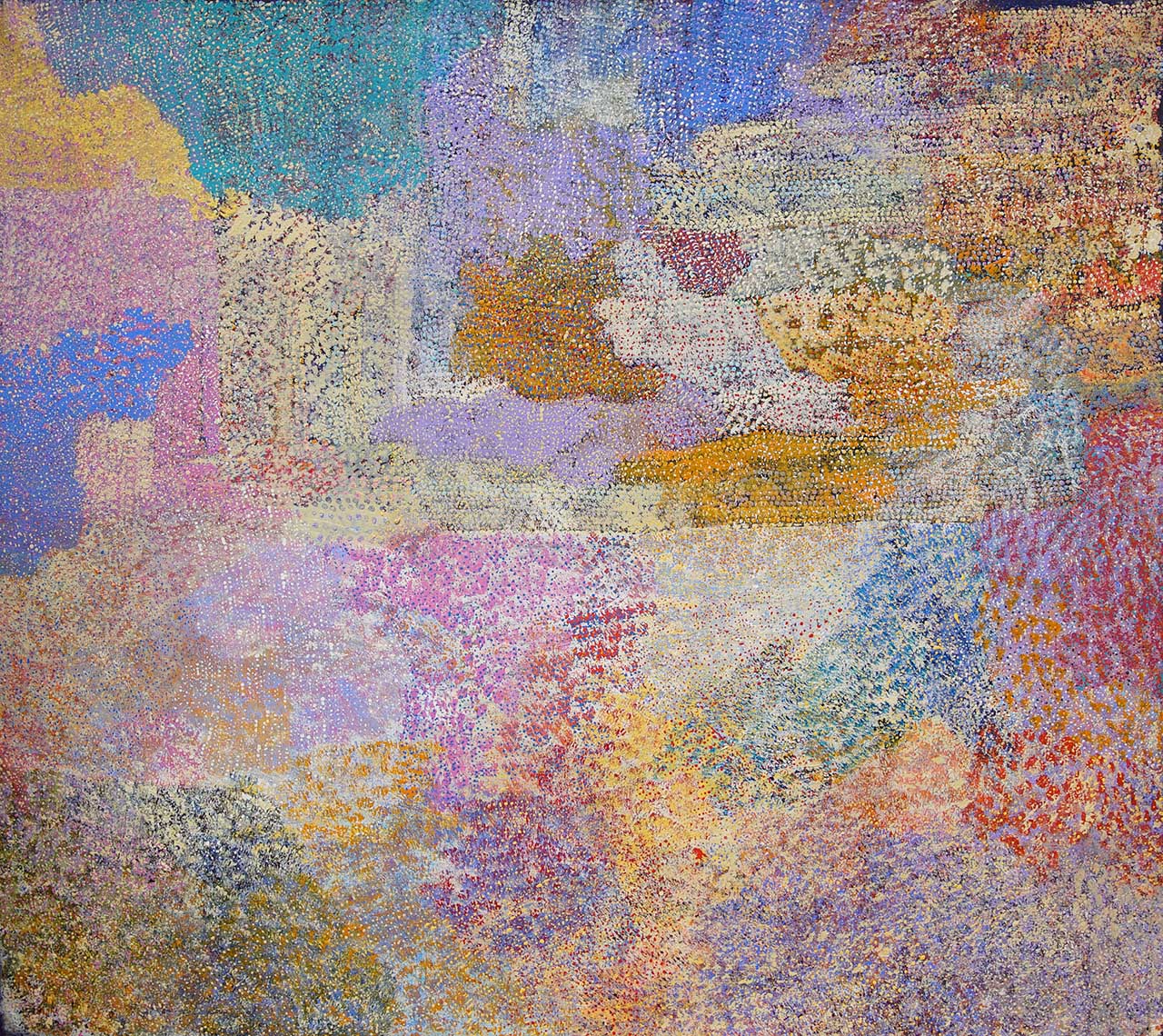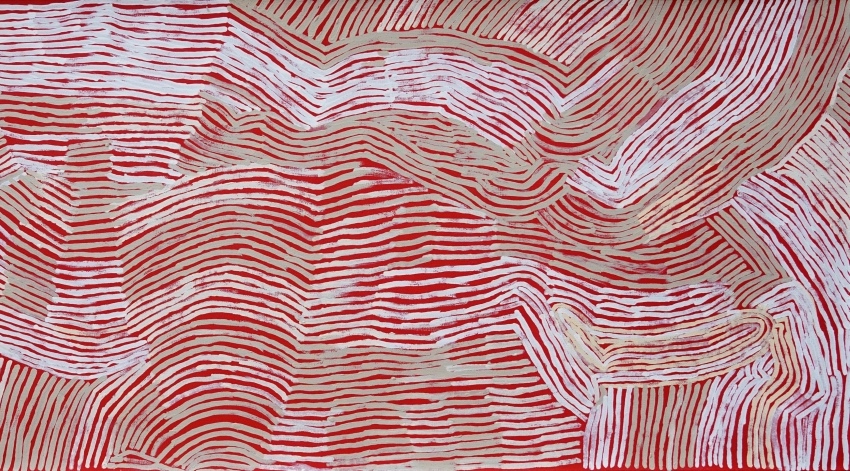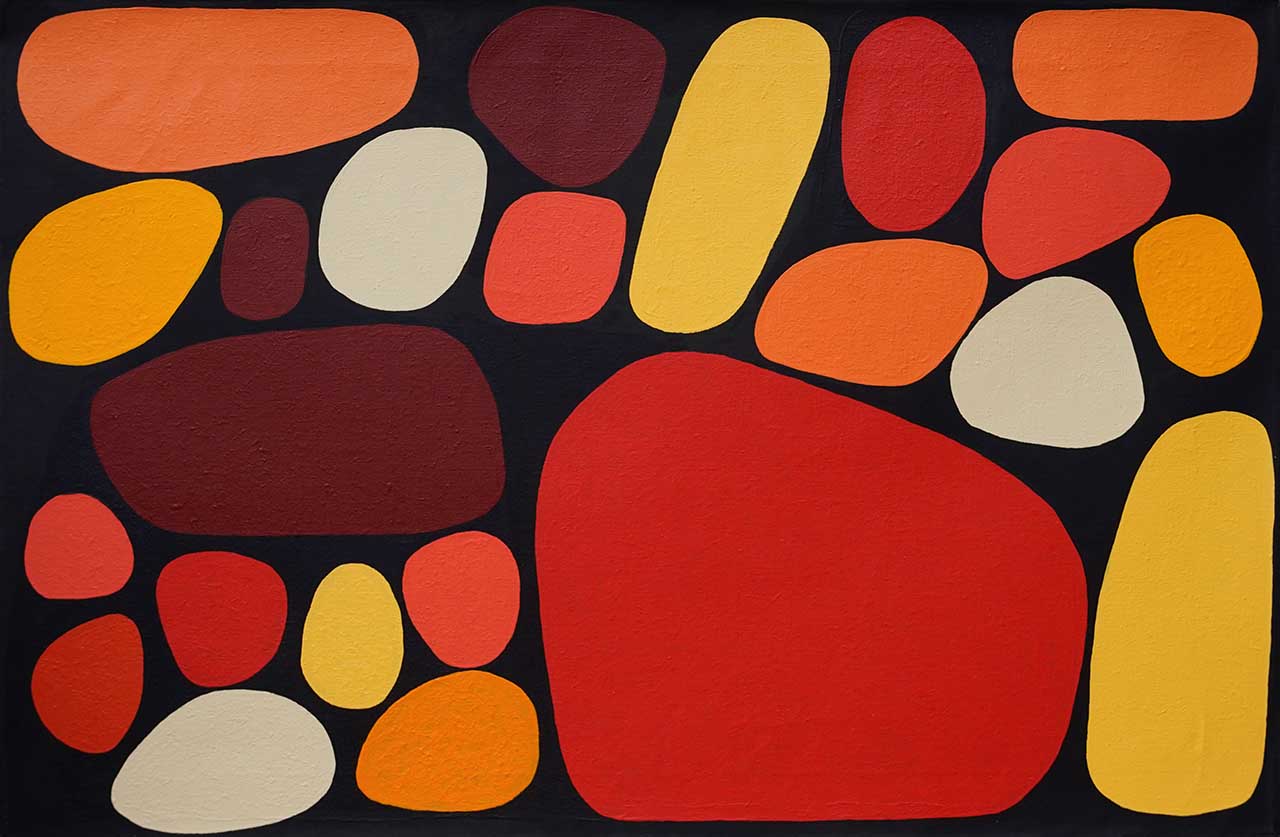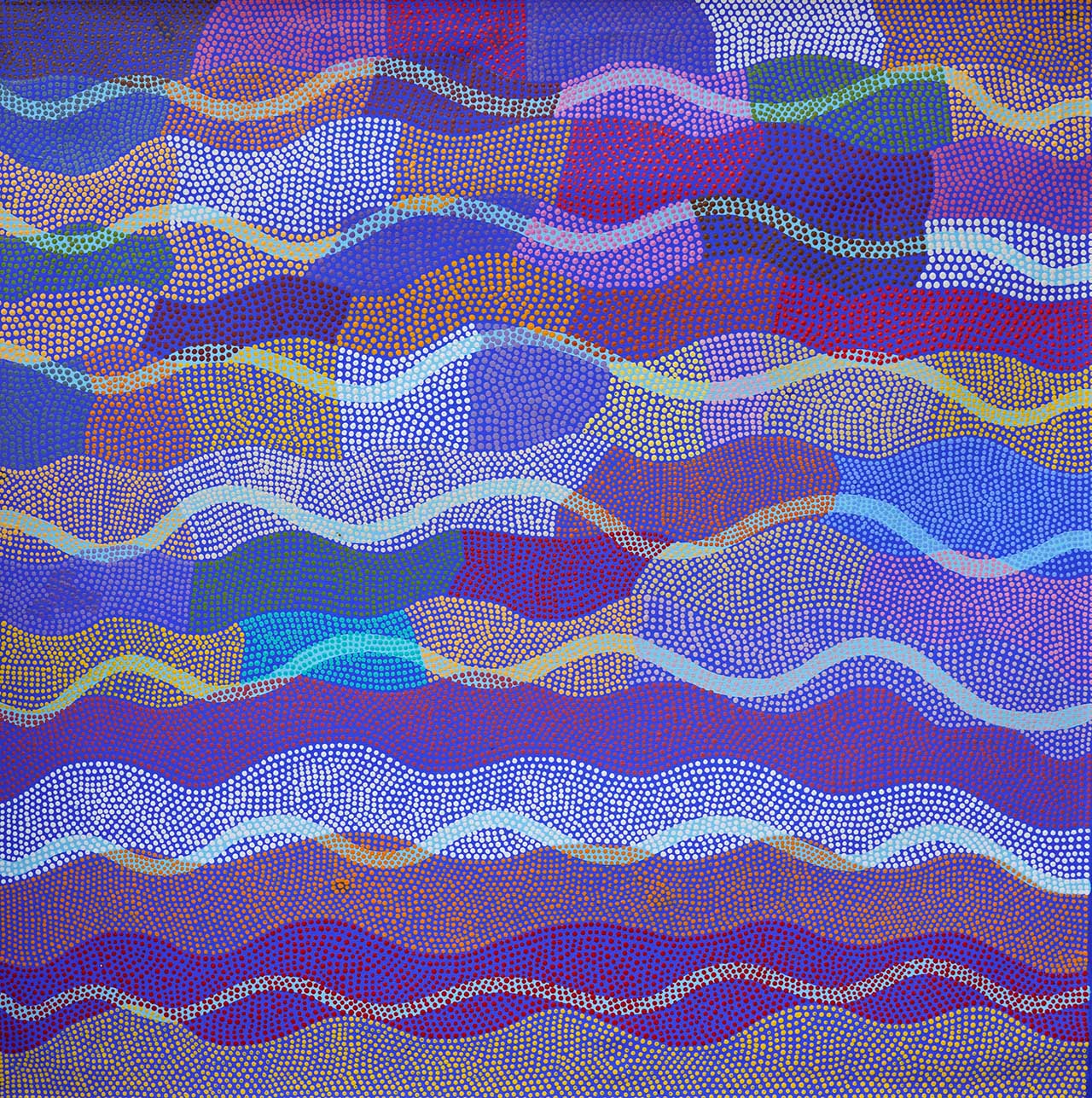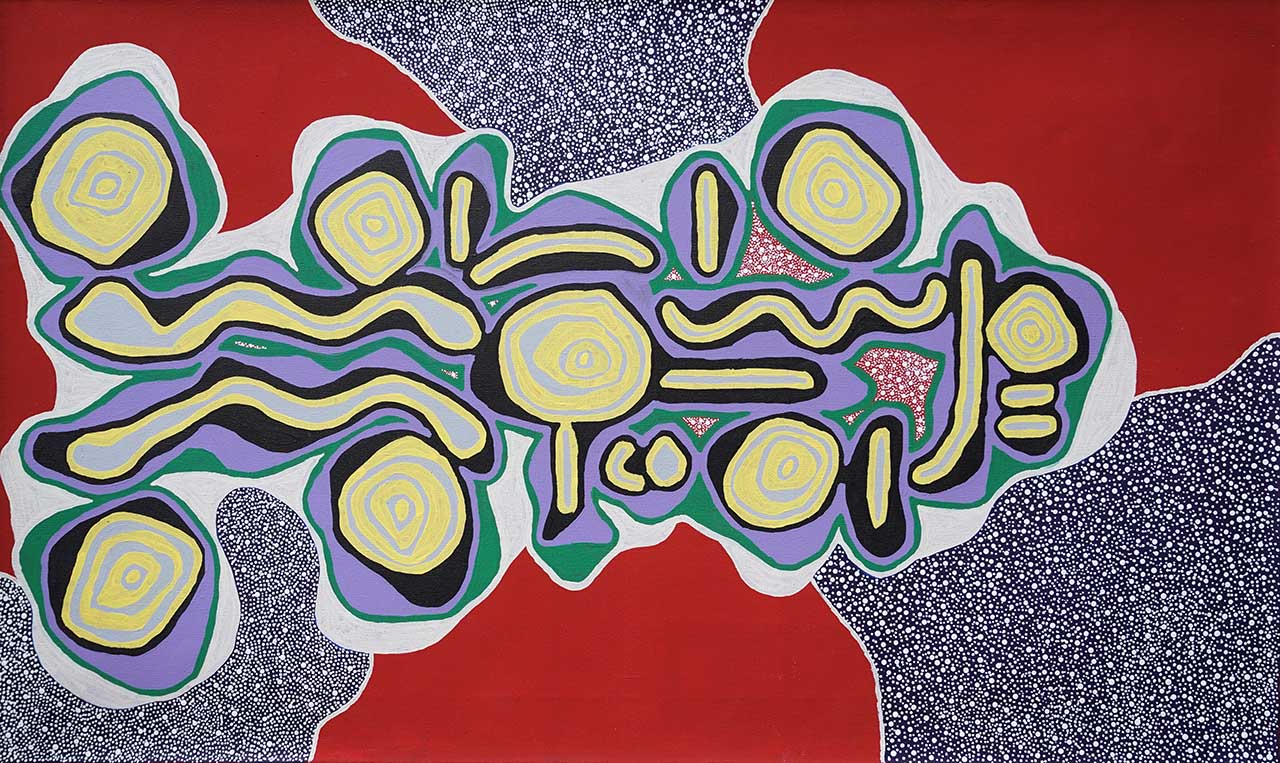The Old & New – Exciting Diversity From Ikuntji Artists
Artists from the desert community of Ikuntji, at Haasts Bluff in Central Australia are exhibiting at Japingka Gallery in Gallery 2.
We are showing a diverse group of works including art from very senior artists as well as exciting new work from emerging younger artists.
The painting that is drawing the most attention is one by the very senior artist, Eunice Napanangka Jack. We've hung it in the arched wall of the gallery. This painting is very finely dotted and rich in contrasting colours. It's almost impressionistic in the soft touch of the colours and the way they blend into each other. This is a style that Eunice rarely paints. It's something that is very time-consuming. It's something that she only paints at certain stages when she feels it's appropriate to do so.
The other works from Eunice are her Kuruyultu images which are like desert sandhills. These use interlocking bands of parallel lines that make up the desert sand country. The title is Kuruyultu, which is her ancestral country, and reflects her connection to that part of the country where her family belong. It is recognisable as sandhills that merge and roll across the canvas.
The artist tends to do these works in more recent times using quite restrained colours. This painting is three soft colours on a bright red background. We've got a white, a beige, and a lemon yellow tone that makes up the entirety of the painting.
One of the distinctive Ikuntji Artists landscape paintings comes from Keturah Zimran, called Puli Puli - Rocks. It consists of hills and large boulder shapes against a very dark background. The artist has two paintings in the show representing aspects of landscape, but very much the rocks and hills of the West MacDonnell Ranges around the country where Haasts Bluff is located.
Ann Lane is represented by two beautiful paintings that she has titled Desert Bore. These represent water in the desert. Her work is very graphic in style, with waving lines moving across the canvas. Each area is broken up by bands of coloured dots that create a weaving pattern across the country. This refers to a water supply at the bore and reflects on the vital importance of water resources in this country.
Bush tucker images are important in women's desert art - here this is represented by a painting from Daphne Marks that she has called Yalka or Bush Onion. This is an image created out of strokes of blended colour, the bush onion merging out of the ground. Throughout there are the little seeds that make up the future of the plant regeneration. She's created a really vigorous and moving image that's full of colour and it is one of those classic bush tucker images from this region.
Hanging next to the painting of Bush Onion is a work that is quite distinctive among the paintings. It's a classic work by Roseranna Larry. She uses images that we recognise as symbols from the iconography of the Western Desert. The background is broken up with areas of black and white dotting setting against areas of solid red. The artist is moving this image of traditional symbols into a space where it's broken up by the colours and the shapes on the canvas. Here we have artists innovating around the ideas of symbols that are familiar and the dots that are familiar, but putting these together in a new and interesting combination.
Ikuntji has a long history associated with the desert art movement, and right back in the early 1980s the artists contributed to the Papunya Tula art movement, the growth of the first expansion of contemporary Aboriginal desert art. It was also the site where the women of the Papunya Tula group made a significant decision to start to paint their own stories and to employ their own colours and sensibilities into paintings that refer directly to women's culture.
The art centre has been right at the core of transitions in the desert art movement. Over the years it has gone up and down, as smaller communities can do, with people moving and generations passing on and leaving the new generation to carry on the stories. This is a very diverse and quite fascinating group of paintings from these artists who all belong to a very important community.
Read more:
- Exhibition: Ikuntji Artists - Irrimatitja
- Artist: Eunice Napanangka Jack
- Region: Haasts Bluff / Ikuntji

